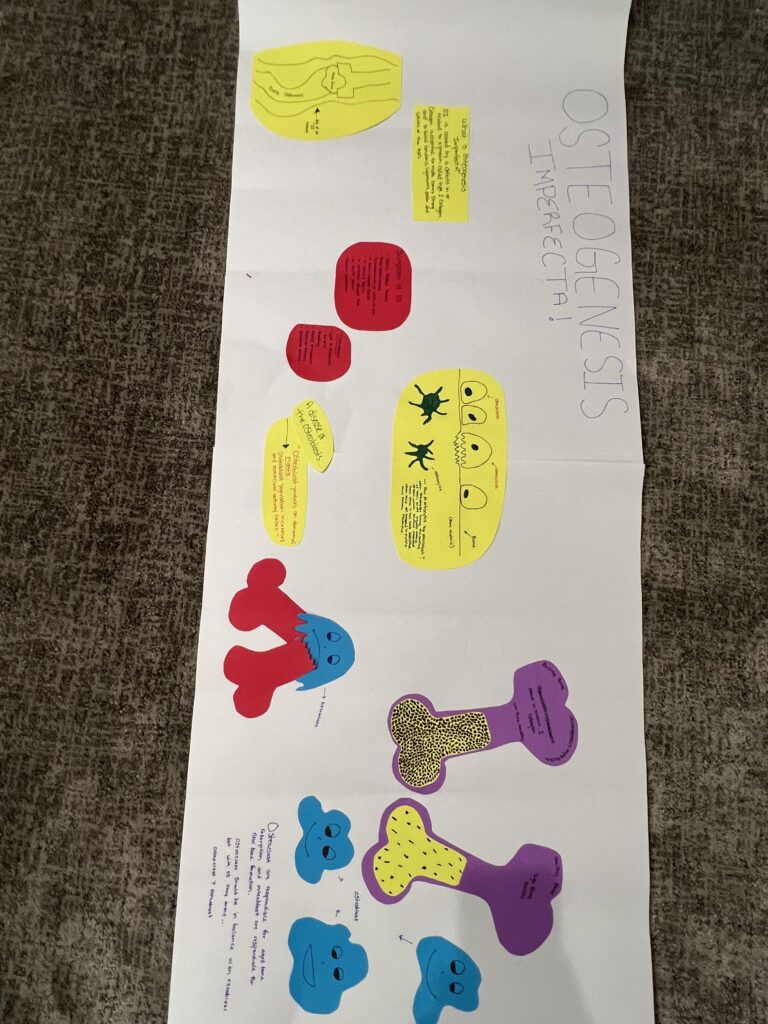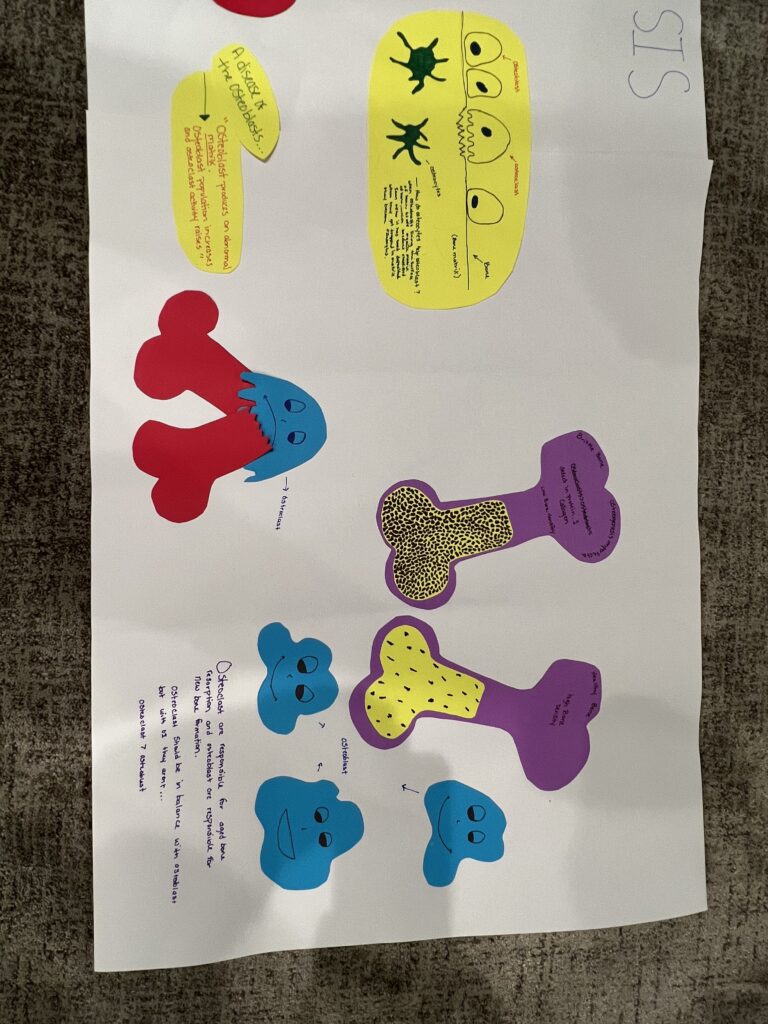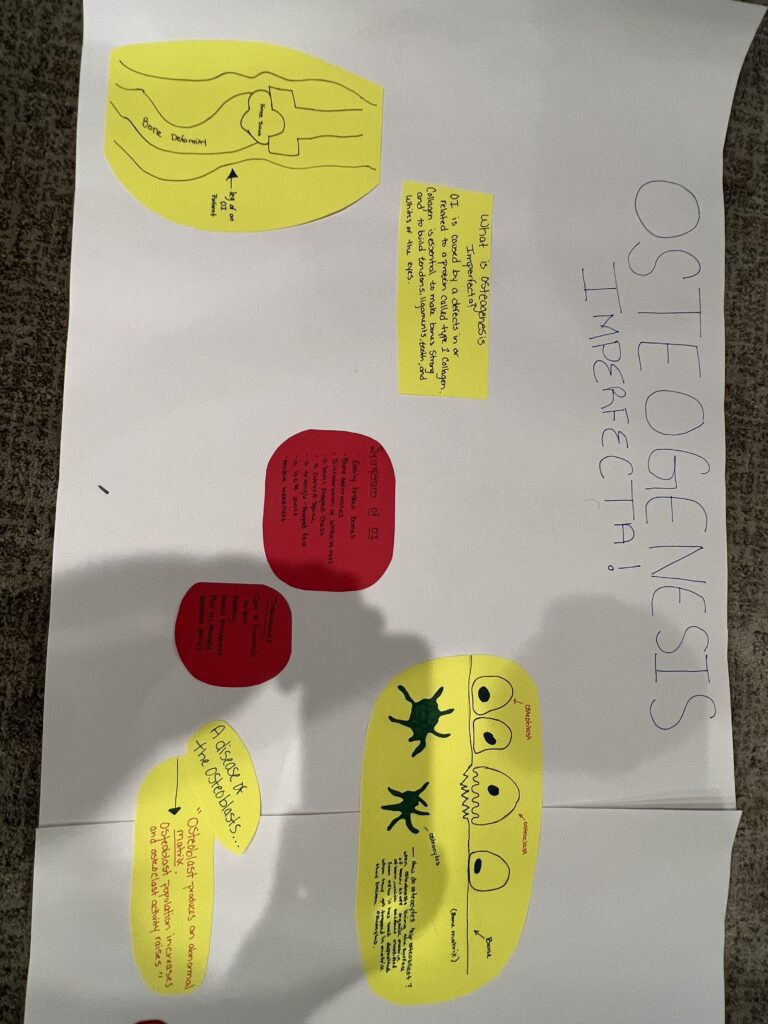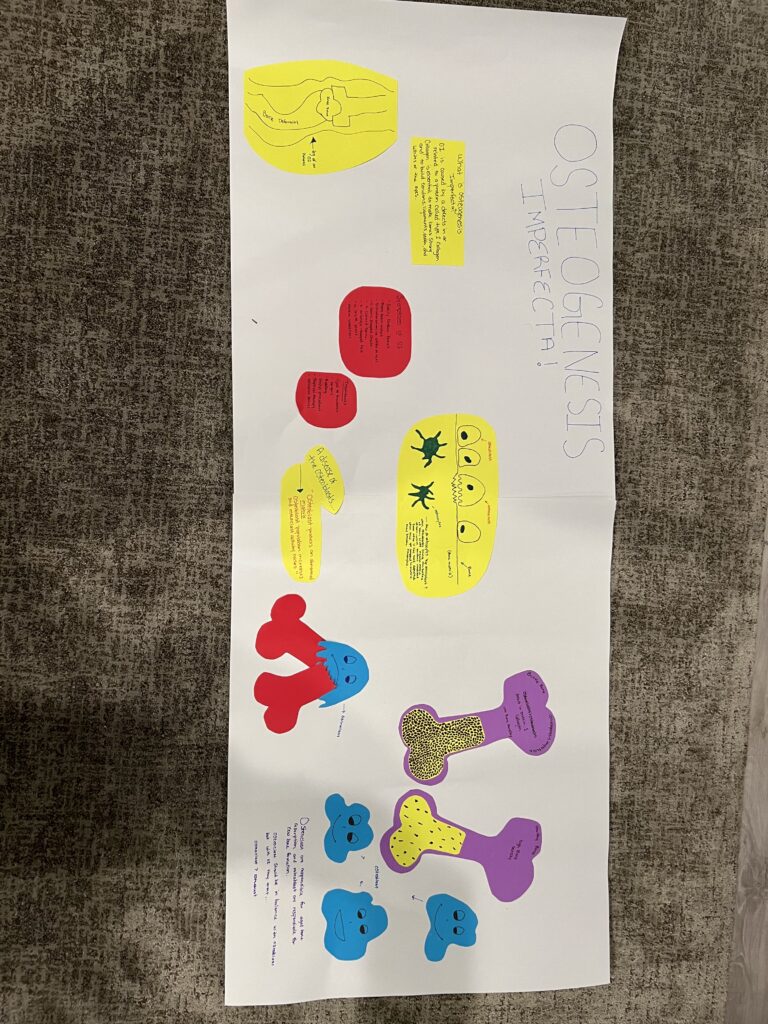



Osteogenesis the disease of the osteoblast.
My objective was identify the four bone type cells
Osteogenesis Imperfecta is a disease that affects the collagen gene i. in the polypeptide chain. The reason it’s called the disease if the osteoblast is because the mutated genes of collagen comes from the mutated gene of osteoblast. If the osteoblast is mutated that causes everything that comes after into the bone matrix to be mutated as well causing brittle bone and more fractures to the bone. This also causes osteoclast to work more causing the bone density to become lower.

This project identifies that osteogenesis imperfecta is caused by a mutated osteoblast cell that creates inappropriate or low amounts of type 1 collagen. Type 1 collagen can be found in tendons, ligaments, teeth, bones, and the eye’s sclera, so OI will affect these places. Individual mutated osteoblast cells create an abnormal bone matrix, but more osteoblast cells are produced, however, osteoclast activity increases in response leading to low bone density over time. The result of this single defect in type 1 collagen results in brittle bones without the support of the collagen protein giving strength, leaving bones prone to fragility fractures, Bone deformities like bowing long bones and triangular faces are present. The project shows tidbits of the key details and identifies the roles osteoclasts and osteoblasts have in osteogenesis imperfect. The description explains that the mutation disturbs the protein’s polypeptide chain.
Osteogenesis imperfecta differs from osteoporosis but can be confused with each other. One difference is that OI can be present at or before birth while osteoporosis affects older people, usually diagnosed after a fracture has occurred. The root cause of weak bones is different, in osteoporosis, lack of estrogen, low calcium, and activation of parathyroid hormones cause bone weakness, In OI it is caused by abnormal type 1 collagen through a mutation that affects the bone formation itself. OI causes skeletal deformities, but osteoporosis does not. Both diseases can cause low bone density which adds to an increased risk of fractures. Being a postmenopausal woman can be a risk factor for osteoporosis while sex is not a risk factor in OI.
Anzilotti, A. W. (Ed.). (2022, April). Osteogenesis imperfecta (brittle bone disease) (for parents) – nemours kidshealth. KidsHealth. Retrieved November 28, 2022, from https://kidshealth.org/en/parents/osteogenesis-imperfecta.html